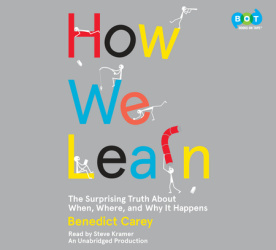2018 School Spending Survey Report
How We Learn: The Surprising Truth About When, Where, and Why It Happens
6 CDs. library ed. unabridged. 7½ hrs. Books on Tape. 2014. ISBN 9780449807798. $35; 6 CDs. retail ed. Random Audio; digital download. PSYCH
COPY ISBN
VERDICT Fans of popular-science books will enjoy the upbeat narration, interactive exercises, and practical scope of this work. Educators, hard-core students, and helicopter parents will get some handy self-help tips from the appendixes. ["This highly engaging read is recommended for educators from early childhood through higher education and beyond," read the review of the Random hc, LJ 9/1/14.]
ALREADY A SUBSCRIBER? LOG IN
We are currently offering this content for free. Sign up now to activate your personal profile, where you can save articles for future viewing




Comment Policy:
Comment should not be empty !!!